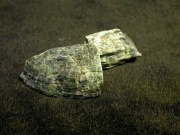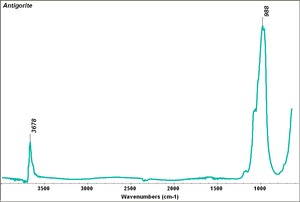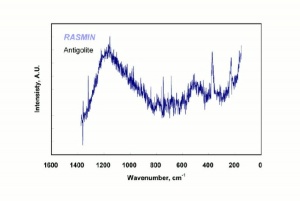Antigorite
Jump to navigation
Jump to search
Description
A variety of Serpentine named after the community of Antigorio in Italy. Antigorite was was first described and named for a specimen from the Antigorio valley in the Novara province of Italy. It is usually dark green but may also be white, yellowish, gray, brown or black. The translucent stones are commonly used as a gemstone in jewelry and carvings.
Synonyms and Related Terms
serpentine; antigorita (Esp.); antigorite (Port.); Antigorit (Deut.); antigoriet (Ned.); bowenite; williamsite; antigolite
Physical and Chemical Properties
- Monoclinic, crystals rare, usually massive
- Cleavage = perfect
- Fracture = conchoidal
- Luster = vitreous, greasy
- Streak = greenish-white
- Low birefringence
- May be translucent to opaque
- Translucent stones may show black inclusions, white veining, or moss-like shapes
| Composition | (Mg,Fe2+)3Si2O5(OH)4 |
|---|---|
| Mohs Hardness | 3.5 - 4.0 |
| Density | 2.5-2.6 g/ml |
| Refractive index | 1.56-1.57 |
| Birefringence | 0.005 - 0.006 |
Resources and Citations
- Mindat.org: antigorite
- Gem Identification Lab Manual, Gemological Institute of America, 2016.
- Thomas Gregory, The Condensed Chemical Dictionary, Reinhold Publishing, New York, 3rd ed., 1942
- G.S.Brady, Materials Handbook, McGraw-Hill Book Co., New York, 1971 Comment: p. 702
- B.Ford et al, Studies in Conservation, vol 39, pp. 57-69. for formula
- Wikipedia: Antigorite [Accessed Aug. 30 2005 and Dec 2022]


